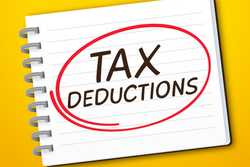What Is the Average Tax Refund?

Our evaluations and opinions are not influenced by our advertising relationships, but we may earn a commission from our partners’ links. This content is created by TIME Stamped, under TIME’s direction and produced in accordance with TIME’s editorial guidelines and overseen by TIME’s editorial staff. Learn more about it.
Are you curious how your tax refund compares to the U.S. average? The IRS releases filing statistics at the end of each tax season. According to its statistics for the 2023 tax season—for the 2022 tax year—approximately 64% of tax returns filed and processed as of April 21, 2023 resulted in tax refunds. Here’s everything you need to know about tax refunds in recent years.
Quality tax-preparation software can provide you with the confidence to prepare and file an accurate tax return. Try H&R Block, one of our recommended platforms.
A tax refund is a reimbursement to taxpayers of their overpayment of income taxes. If you receive a large tax refund, you are likely having too much withheld from your paychecks. When you start a new job, you will have to fill out employment paperwork. One of these forms is the Form W-4, Employee’s Withholding Certificate. The information you provide on the W-4 gives your employer the details needed to determine your federal income tax withholding. If you have a life change—a marriage, divorce, new baby, etc.—be sure to update your W-4 on file with your employer. Each of these major life changes impacts your taxes.
According to filing season statistics reported by the IRS, the average tax refund in the 2023 tax season—for tax year 2022—was $2,753. The average direct deposit tax refund was slightly higher than the overall average, at $2,827.
According to the IRS filing-season statistics, the average tax refunds in the last five years have been:
Note, tax year 2021 saw higher tax refunds due to pandemic-relief–related tax breaks in 2021.
The other issue is that filing-season stats report as of the April tax deadline. They leave out what is eventually paid out to people who file extensions on their taxes and therefore don’t get refunds until the October 15 tax-extension deadline or even later. The IRS’s Statistics of Income (SOI) data—which includes everything— reveals that the final average tax refund is actually somewhat larger.
According to Lending Tree, Wyoming had the highest average tax refund for several years in a row. This information was based on an analysis of individual income tax returns from the 2020 tax year—that’s the latest tax year currently reported by the IRS’s SOI information.
The top five states and districts with the biggest tax refunds in tax year 2020 were:
According to Lending Tree, Maine had the smallest average tax refund for several years in a row—$2,920 as of tax year 2020. This information was also based on an analysis of individual income tax returns reported by the IRS’s SOI.
According to Lending Tree, high-income taxpayers in the $500,000 to $999,999 bracket received the biggest total dollar amount refund—an average refund of $35,128 in tax year 2020. Low-income taxpayers in the $10,000 to $24,999 bracket received the biggest refund as a percentage of their income. Here is the breakdown by tax bracket for tax year 2020.
| Income level | Average refund | % of income |
|---|---|---|
$10,000 to $24,999 | $2,799.74 | 11.2% to 28.0% |
$25,000 to $49,999 | $2,845.81 | 5.7% to 11.4% |
$50,000 to $74,999 | $2,830.10 | 3.8% to 5.7% |
$75,000 to $99,999 | $3,347.69 | 3.3% to 4.5% |
$100,000 to $199,999 | $4,436.36 | 2.2% to 4.4% |
$200,000 to $499,999 | $10,316.37 | 2.1% to 5.2% |
$500,000 to $999,999 | $35,128.02 | 3.5% to 7.0% |
This information was also based on an analysis of individual income tax returns reported by the IRS’s SOI.
Tax refunds were smaller in the 2022 tax year compared to the 2021 tax year because many pandemic relief related tax breaks expired. In the 2021 tax year, taxpayers were able to claim up to $300 ($600 for married couples filing jointly) in a charitable contribution deduction in addition to the standard deduction. In typical years, you cannot claim any charitable contributions unless you itemize your deductions. Taxpayers also did not receive an additional stimulus payment in tax year 2022 with their tax refund because there were no Economic Impact Payments in 2022.
One major tax break that expired involved the child tax credit. In typical years, the child tax credit is a partially refundable credit. The full amount of the credit is $2,000, but only $1,500 is refundable beyond the amount you owe in taxes—the portion referred to as the additional child tax credit. For tax year 2021, the credit was fully refundable. Additionally, the maximum dollar amount of the child tax credit was increased in 2021. Children under six received up to $3,600 while children ages six to 17 received $3,000. The age limit was also increased to include 17-year-olds in 2021 only. In typical years, a child must be under age 17 to qualify.
The child and dependent care credit was also expanded for tax year 2021. The maximum was increased to $4,000 for one qualifying person or $8,000 for two or more, and it was made refundable in certain circumstances. In tax year 2022, the maximum is $3,000 for one qualifying person or $6,000 for two or more. The credit has also returned to being nonrefundable, so you may miss out on part of the credit if you owe less in tax than the full value of the credit. Also remember—if you have a household employee like a nanny, you may have to pay employment taxes. Consider using HomePay by Care.com to handle your household tax and payroll needs.
A tax refund is a reimbursement of your overpayment of taxes. Receiving a big tax refund is not necessarily a good thing. The IRS does not pay you interest on your money it has held onto throughout the year. If you reduce your tax withholding by adjusting your W-4, you will be able to hold onto more of your own money in the form of bigger paychecks throughout the year. Getting your tax refund to as close to zero as possible is technically ideal.
If you do get a big tax refund, be sure to put your windfall to good use. If you have large credit card or other loan balances, you should pay those off first. If you don’t, put some aside in savings or an investment account. Take advantage of interest rates—whether it's investing your own money or avoiding high interest charges. A budgeting and investing app—like Playbook or Simplifi by Quicken—can help you create a budget and investing plan to optimize your taxes.
You can also get financial advice regarding your retirement accounts or other investment plans. Consult with Empower's team of experts
Tax refunds vary considerably depending on your filing status and number of dependents—both of which impact your tax withholding. If you’d like to calculate your estimated tax refund prior to the end of the year, you can use an online calculator like the TurboTax tax calculator. If you own a business and have to pay estimated taxes quarterly, you can estimate your taxes owed, track your business expenses, and pay taxes through an app like Found.
The quickest way to get your tax refund is to file electronically and select the direct deposit option for your tax refund. Filing your tax return through the mail or waiting for a hard copy of a check will delay your tax refund. Here are some great tax software options if you’d like to file electronically this tax season:
Wondering what to do with your tax refund?
See our experts' tips:
How to Invest $1,000
How to Invest $10,000
How to Invest $20,000
How to Invest $100,000
According to an analysis done by Lending Tree, the average tax refund for a person making between $100,000 and $199,999 is $4,436.
Analysis by Lending Tree reports that the average tax refund for a person making between $25,000 and $49,999 is $2,845.81.
According to the IRS, it issues 90% of refunds within 21 days of filing a tax return. If you claim certain tax credits—such as the earned income tax credit (EITC) or Additional Child Tax Credit (ACTC)—the earliest you can expect your tax refund is February 28, in most situations.
The quickest way to get your tax refund is by e-filing your tax return and selecting the direct deposit option for your refund. You can check the status of your return and track your refund using the Where’s My Refund? tool on the IRS website. If you have e-filed, this information may be available as early as 24 hours after you file. If you filed a paper return, it may take up to 4 weeks for information to be available on the IRS website.
TIME Stamped is paid a flat fee for each successful referral to Herring RIA Sub, LLC ("Playbook") made through our links. TIME Stamped is not a Playbook client. There is no guarantee that clients will have similar experiences or success.
The information presented here is created by TIME Stamped and overseen by TIME editorial staff. To learn more, see our About Us page.





